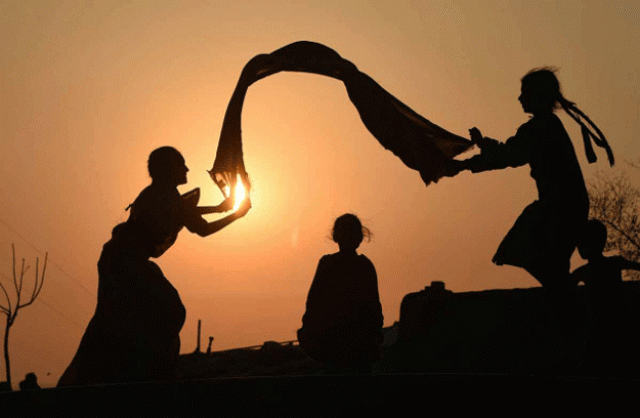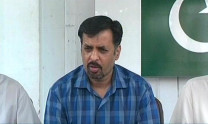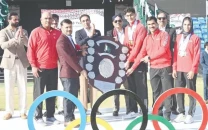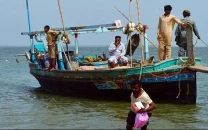Call to implement Child Marriage Restraint Act
Report says child marriage blocks girls contribution to economic and social development

The lawmakers, civil society activist and government officials said on Monday that Sindh government has failed to implement the Sindh Child Marriage Restraint Act 2013.
"Legislation is there but we do not its implementation," said Sindh Assembly (SA) member Sidra Imran at the report launch of the Population Council with support from the United Nations Population Fund (UNFPA) at a local hotel.
"Child marriages cannot be restricted until the law is implemented," she urged.
The persisting trend of child marriage is not due to any duress, rather a cultural compulsion, said MPA Marvi Faseeh. "This indicates a mindset we have in our society," she said adding, "Waderas are not behind these practices, rather it is a local trend that needs to be addressed." Parents were also facing various socio-economic issues.
"We need to change this mindset," urged Shahnaz Wazir Ali, former Member of National Assembly and Shaheed Zulfiqar Ali Bhutto Institute of Science and Technology (SZABIST). "The government, relevant ministries, civil society and media must come together for collective and transformational change to prevent child marriage," she said.
Population Council Project Director Samia Ali Shah said that child marriage is a clear violation of reproductive and child rights and directly contributes to poor maternal and child health as well as high fertility rates.
"Child marriage is as much a health rights issue as it is a social issue. It contributes to higher birth rates as young women are less likely to be able to access contraceptives. A broader behavioral transformation is required to dismantle the social narratives and cultural practices which keep this tradition rooted in place," she said.
UNFPA's in Pakistan Bayramgul Garabayeva said UNFPA works towards designing evidence-based programmes and policies to eliminate child marriage practice and support the needs of married women particularly in family planning and maternal health.
Read More: Court orders inclusion of child marriage clause
Presenting an overview of the report on, its author Sara Zaman, presented key findings of the practice of child marriage in Sindh. She shared evidence on how child marriage perpetuates gender inequality in multiple spheres and slows economic and social development by preventing girls and women from contributing fully to society.
"Just a few cases of child marriage are reported. This is a major issue the countries in South Asia are facing," she added.
Sharing her experience of interaction with young mothers, Dr Haleema Yasmin, Professor of Ob-Gyn at Jinnah Postgraduate Medical Centre said that: "we see a lot of disparity between a doctor and the [poor and young] patient." She said that the young mothers were not taking care of their diet as well.
Advocacy Adviser Advocate Sara Malkani said that there was an issue of implementation of the law. "And various vulnerabilities are not being addressed," she said. "We need to strengthen the welfare protection mechanism too," she urged.
"Police's role is important," said Anwar Mahar from NARI organisation. He said that monitoring committees were set up after the law was passed from the SA. "I do not see them working anywhere now," he said.
Secretary Population Welfare Sindh Rehan Iqbal Baloch said child marriage has broader consequences in terms of early childbearing and population growth. The Sindh government is focusing on timely family planning counseling to young couples.
Director General Sindh Social Welfare Saif Ullah Abro emphasized the report findings will help in increasing access to girls' education, facilitating women's employment and participation in politics, and raising awareness at all levels regarding women and child rights and the issue of reproductive.
Dr Talib Lashari said government of Sindh is preparing a policy on health and population welfare to improve child and maternal health indicators in the province.
Published in The Express Tribune, December 7th, 2021.



















COMMENTS
Comments are moderated and generally will be posted if they are on-topic and not abusive.
For more information, please see our Comments FAQ